This simple bee hotel will provide a home for a variety of solitary bees, including red mason bees and leafcutter bees.
Often when people think of bees in the UK, it is the social honeybee and bumblebees that spring to mind. But bees are a very diverse group, with lots of different lifestyles and nesting habits. Around 275 bee species live in Britain, including just one honeybee and 27 bumblebee species. The vast majority are solitary bees.
The Museum's bee expert and Curator of Hymenoptera Joseph Monks says, 'Many people do not realise honeybees and bumblebees only form 10% of the UK's total bee fauna. Solitary bees form an integral part of pollination networks and therefore we must all do our bit to protect and conserve these vital species.'
Building a bee hotel is one of the ways you can help.
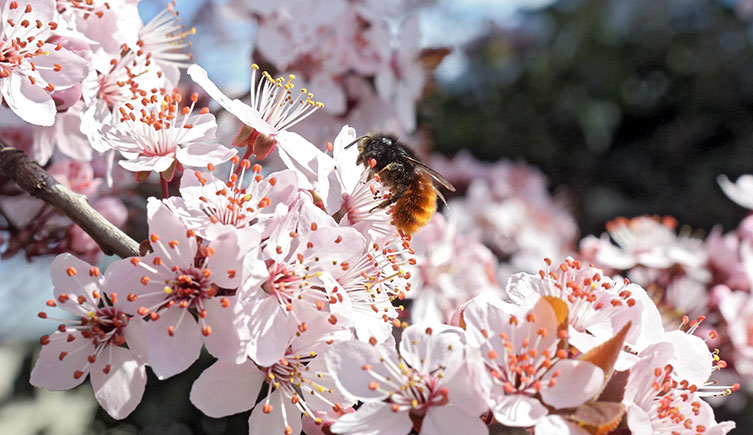
A red mason bee visiting cherry blossom. Solitary bees are important pollinators. © Agencja Fotograficzna Caro/ Alamy Stock Photo
What is a bee hotel?
A bee hotel is a place where certain types of bees can nest. Unlike actual hotels, they are not used for short overnight or week-long stays. Instead, they provide long-term accommodation where a bee lives from the time it is laid as an egg, until it is ready to emerge as a fully grown adult. With that in mind, bee hotels are sometimes called solitary bee houses, bee condos or bee nest boxes.
Bee hotels are designed to provide suitable nesting opportunities for aerial, cavity nesting species that would usually seek out old beetle holes in wood, other small, pre-existing tunnels or hollow plant stems. This design provides the latter.
To make this bee hotel you will need:
- hollow canes
- a plant pot
- stones
- secateurs
For the hollow canes you could try bamboo and common reed (used for screens and thatch), as well as dried, hollow stems from plants such as sunflowers, teasel, fennel, brambles, raspberries and elder.
- Use a cane to measure from the bottom of the pot to one centimetre below the rim.
- Carefully cut the cane to this length, ensuring there is a clean opening. Children will need the help of an adult.
- Continue to cut enough canes to fill the pot. Keep any short, leftover sections for later.
- Fill the pot with the long lengths until it is tightly packed.
- Fill any gaps with the short pieces of cane - still with the hollow openings facing outwards so that bees can get in.
- Find a sheltered, sunny spot and make a base out of stones.
- Place the pot so that it faces slightly downwards to allow rainwater to escape. Your bee hotel is now ready for guests to move in.
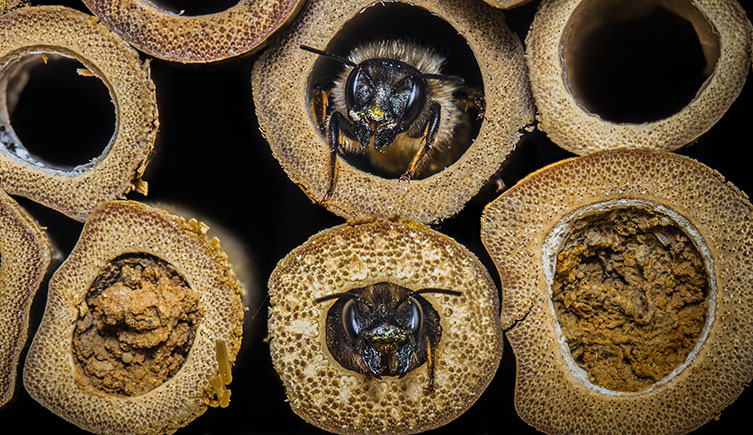
Female solitary bees emerging from nests they're building next to two already occupied nests. Depending on the species, bees could move into your hotel in spring or summer. © thatmacroguy/ Shutterstock.com
Where to put a bee hotel
Where you put your bee hotel affects the chances of it being used. It is important to position your bee hotel in a sunny location, where it will warm up quickly in the morning. This is particularly important to prevent overwintering insects freezing.
Place the hotel where the tube entrances will be sheltered from heavy rain, but make sure they're not hidden by vegetation. A southeast orientation will tend to give the best balance of Sun exposure and shelter from driving rain.
If you find that bees don't use your hotel, try a different location and consider whether you could add more of the flowers that the solitary bees need. It's worth waiting a year, but if you don't see any plugged tubes by October, try moving the hotel in time for the following spring.
Do solitary bees sting?
Solitary bees are not aggressive. It's highly unlikely you'll get stung if you leave the bees alone. The males lack a stinger and the females generally only use theirs if they are being handled roughly. Even if they do, their sting is much less painful than a honeybee or wasp sting. Families and solitary bees can safely share outdoor spaces.
How to tell if your bee hotel has guests
If you notice that the ends of the tubes are plugged with mud, leaves, resin or fine plant hairs, then you know your hotel has guests. Different bee species use different materials for their nests and multiple types may use your hotel at the same time. If you're lucky, in summer you may even spot leafcutter bees flying to the hotel carrying leaf fragments nearly as big as themselves.
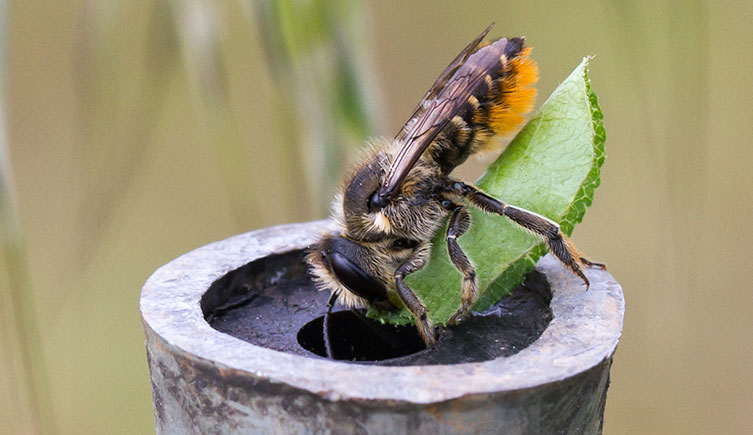
A leafcutter bee carrying a leaf to its nest © Macello Consolo (CC BY-NC-SA 2.0) via Flickr
A single tube will generally be occupied by multiple developing bees. Species that use bee hotels tend to create multiple nest cells within a tube, laying a single egg in each cell and separating them with walls made of mud or plant material. The number of cells will depend on the length of the tube.
You may also find that bees shelter in the unoccupied tubes in bad weather during their flying season.
More tips for success
- Choose canes and stems that have an internal diameter ranging from 2-10mm to accommodate bees of different sizes. While the red mason bee nests in quite large holes, the small scissor bee needs holes just 2mm wide. Others prefer something in the middle, including 6-8mm for leafcutter bees.
- Try to keep your bee hotel dry - damp internal conditions encourage fungal and bacterial diseases. Use a waterproof plant pot (avoid plastic) or place it under shelter, and make sure your bee hotel is tilted downwards so that if water gets in, it can drain away.
- Your hollow tubes should be slightly shorter than the container you put them in, to protect them from the rain.
- Ensure the cut canes and woody stems don't have splinters sticking out. Rough edges could prevent bees entering the holes or damage their wings. To avoid this, don't use blunt blades for cutting. You could use sandpaper to smooth the cut edges.
- Avoid using canes blocked internally with pith or solid nodes, as these create a barrier that the bees can't move past.
- If using bamboo canes, cut some at a node to create a closed-ended tube. This will make it more difficult for parasites to gain entry.
- Help the bees to find the material they need to build and seal their nest cells - provide areas of mud and leaves.
- Grow a variety of nectar and pollen-rich flowers. Solitary bees forage within 300 metres of their nesting sites. We've provided some suggestions later in this article.
- Don't make your bee hotel too big. Having large numbers of bees nesting close together increases the risk of diseases spreading. Rather than creating one large bee hotel, consider creating multiple smaller ones using this design and placing them in different parts of the garden. This will better mimic the bees' natural nest choices.
Bee hotel maintenance
There is a risk that pests and diseases will build up in bee hotels if they're not maintained. It is a good idea to replace the used canes each year, after the new generation of adult bees have emerged from the plugged tubes.
Solitary bee life cycle
Solitary bees undergo complete metamorphosis, like butterflies, beetles, flies and some other insects do. Their eggs hatch into larvae which look very different from the adult insects. Bee larvae are also called grubs and look like maggots, with no eyes, legs or wings.
The larvae transform into adult bees within a pupa (the equivalent of a butterfly's chrysalis). This change happens within a nest cell.
Solitary bees mate in spring or summer, depending on the species. The female bee then finds a suitable spot and creates a nest, completing a sequence of nest cells - stocking each with pollen mixed with nectar, laying an egg and then sealing it up.
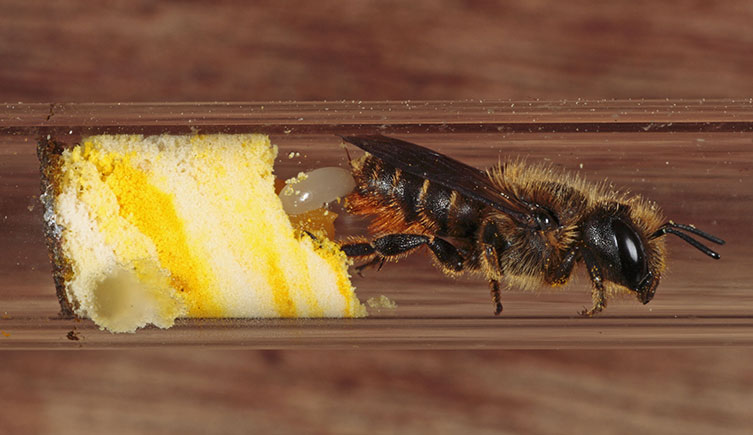
A mason bee laying an egg in a nest cell stocked with pollen provisions © FLPA/ Alamy Stock Photo
A larva hatches from each egg and eats the pollen mixture provided in the sealed chamber, growing as it does. It then forms a prepupa, an inactive stage. Many species stay in this state over winter, forming a pupa the following spring. The fully grown adult bee emerges in spring or summer, at which point it leaves the nest and searches for a mate.
Parasitic bees share the same life cycle, but rather than building a nest and stocking it with food, they lay their eggs in the nest of another bee and their larvae eat the food supplied by the host bee for its own larvae. Due to this behaviour they're also called cuckoo bees.
Which solitary bees use bee hotels?
Any solitary bees that naturally nest in hollow plant stems could potentially use this bee hotel. In the UK, seven groups of solitary bees have this type of nesting behaviour: Anthidium, Chelostoma, Heriades, Hoplitis, Hylaeus, Megachile and Osmia. The species likely to use your hotel will depend on where you live and the flowers in the surrounding area - some species are reliant on particular pollen sources.
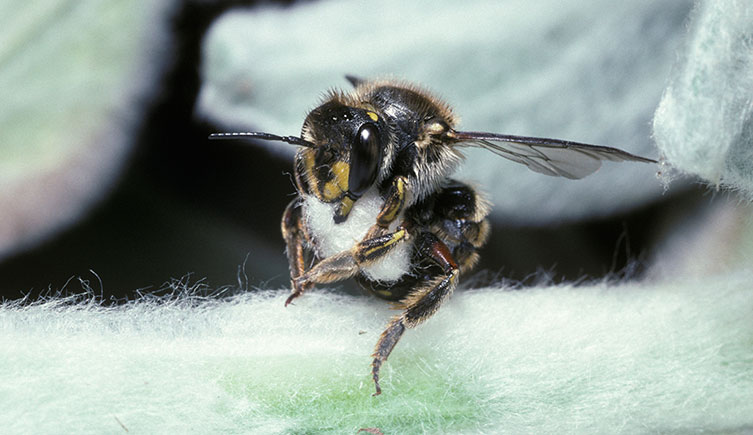
The wool carder bee (Anthidium manicatum) builds its nest using plant hairs gathered from furry leaf surfaces, such as lamb's ear, great mullein and yarrow. If you're lucky, you might spot a female collecting some or flying back to her nest gripping a large silvery ball. © Premaphotos/ Alamy Stock Photo
The following species are commonly associated with bee hotels and gardens:
- Red mason bee (Osmia bicornis)
- Blue mason bee (Osmia caerulescens)
- Orange-vented mason bee (Osmia leaiana)
- Patchwork leafcutter bee (Megachile centuncularis)
- Willughby's leafcutter bee (Megachile willughbiella)
Other potential bee hotel guests are:
- Common yellow-face bee (Hylaeus communis)
- White-jawed yellow-face bee (Hylaeus confusus)
- Wool carder bee (Anthidium manicatum)
- Large-headed resin bee (Heriades truncorum)
- Small scissor bee (Chelostoma campanularum)
You can find UK distribution maps for these species on the Bees, Wasps and Ants Recording Society's (BWARS) website.
Hylaeus confusus © Leon van der Noll (CC BY-NC-ND 2.0) via Flickr
Anthidium manicatum © gailhampshire (CC BY 2.0) via Flickr
Best plants for solitary bees
Since solitary bees forage for pollen and nectar close to where they nest, suitable flowers are needed in the neighbourhood of a bee hotel.
Early nesting mason bees will appreciate trees with spring blossom or catkins such as goat willow, apple and cherry trees, but they will also visit a wide variety of cultivated garden flowers. Other plants such as dog roses, honeysuckles, knapweeds, thistles and birds-foot trefoil will support a wide range of solitary bees with later flight seasons.
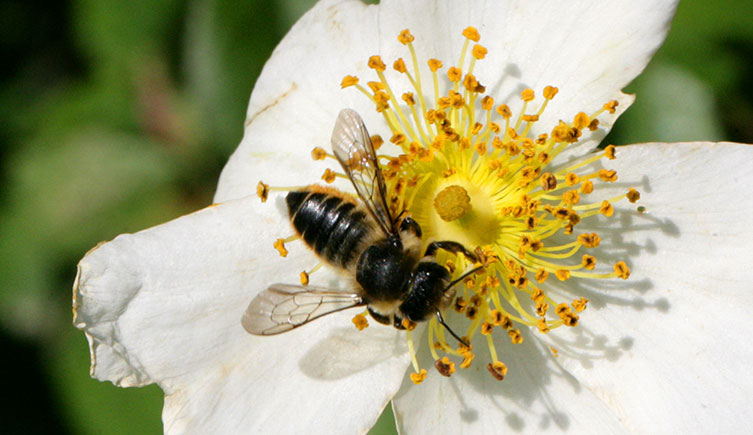
Dog roses are a favourite foliage for leafcutter bees, as well as an important nectar source © Naturepix/ Alamy Stock Photo
The smallest bees need flowers they can access using their small mouthparts. Hylaeus species favour composites, umbellifers and mignonettes, where flower heads are made of lots of smaller flowers or florets. Other solitary bee species have specific pollen preferences - for example, the small scissor bee requires bellflowers and the large scissor bee needs buttercups.
You can find out more about the flowers visited by particular bees on the BWARS website.
More ways to help solitary bees
Joe says, 'Bee hotels are just one-way gardeners can help provide nesting opportunities for bees. In the UK, the majority of our solitary bee species are ground-nesters. Therefore, where possible, gardeners should avoid laying down hard surfaces in their gardens to allow bees access to areas of soil.'
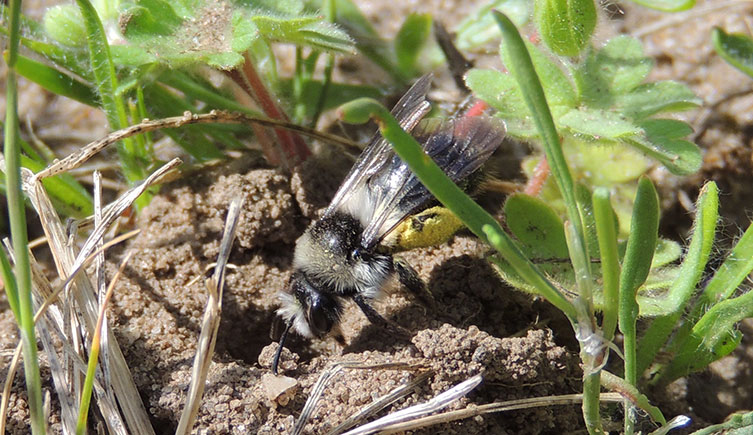
'Additionally, three of our Osmia species - O. aurulenta, O. bicolor and O. spinulosa - nest inside old snail shells. Allowing snails in your garden creates an important food source for mammals and birds, but also allows these specialised bees to thrive.'

British wildlife
Find out about the plants and animals that make the UK home.

Do your bit for nature
Biodiversity is connected to almost every aspect of our lives, but it needs our help. Small actions can make a big difference.

Visit our new gardens
Our gardens follow the story of how life on Earth has changed over time, from the days of the dinosaurs through to today.
Open daily

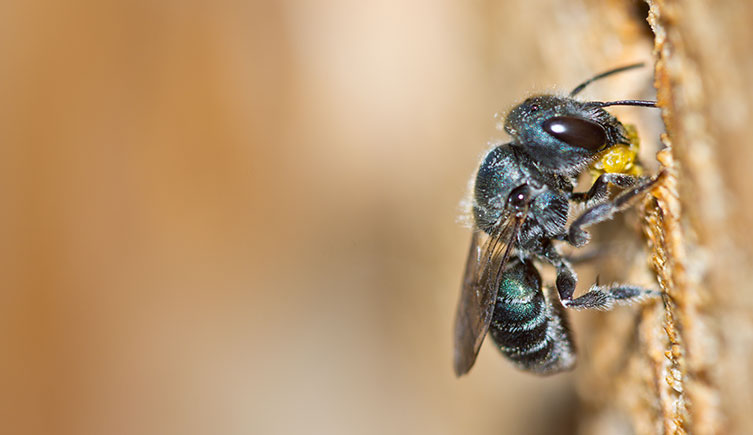


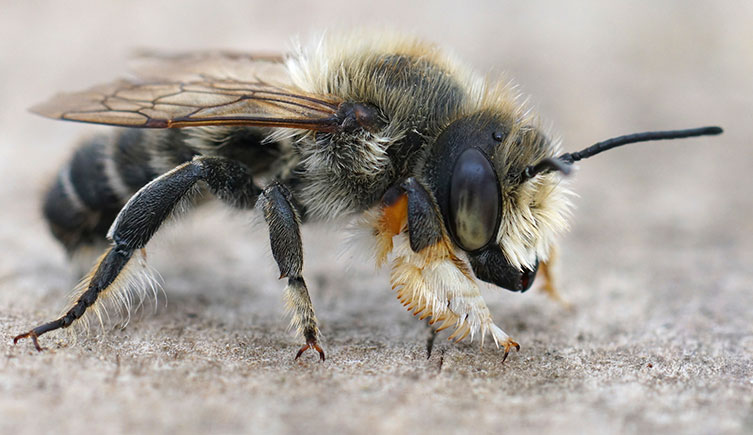
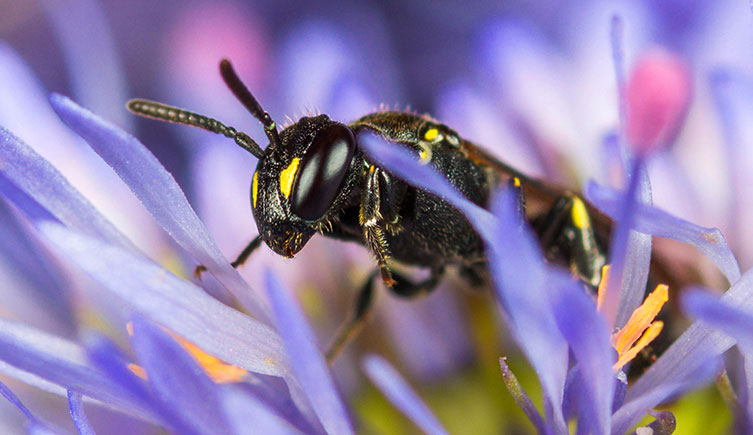
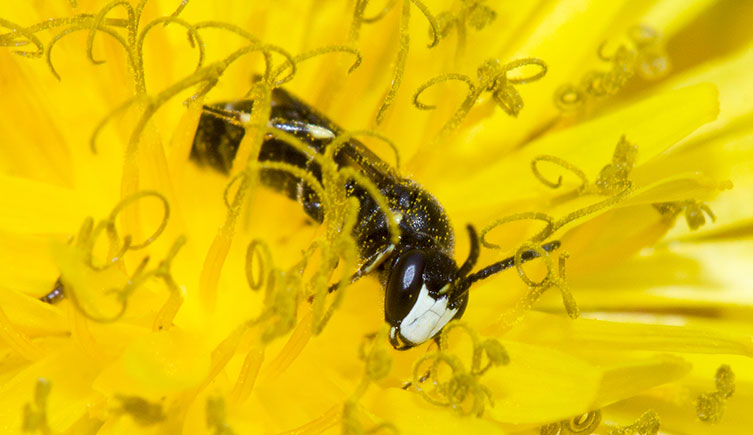
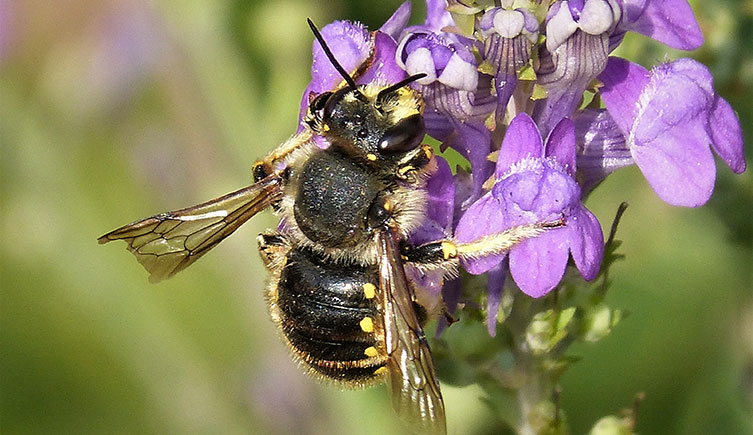
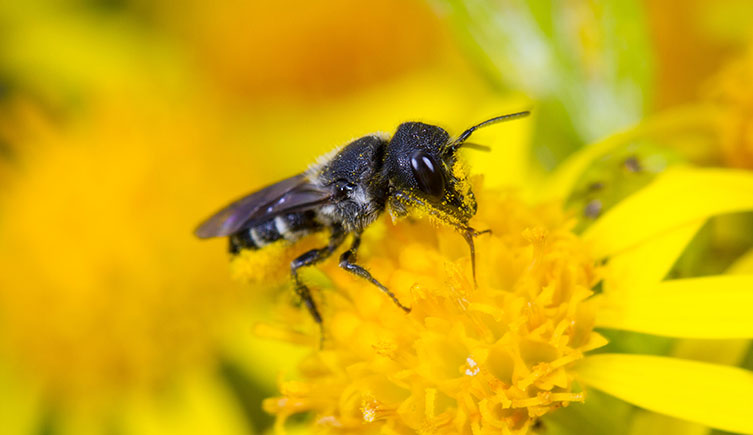
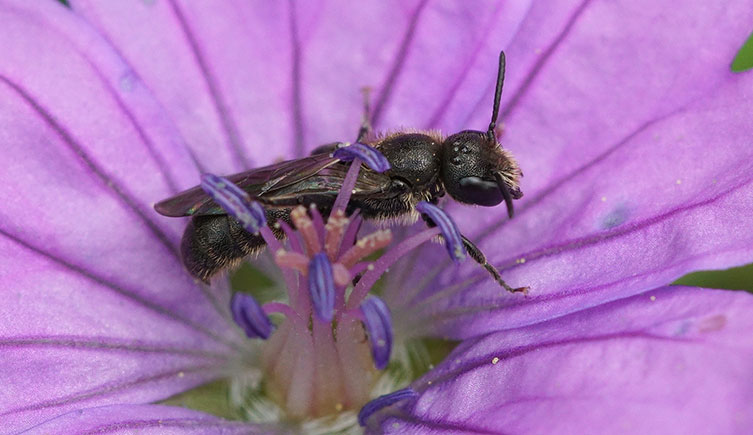

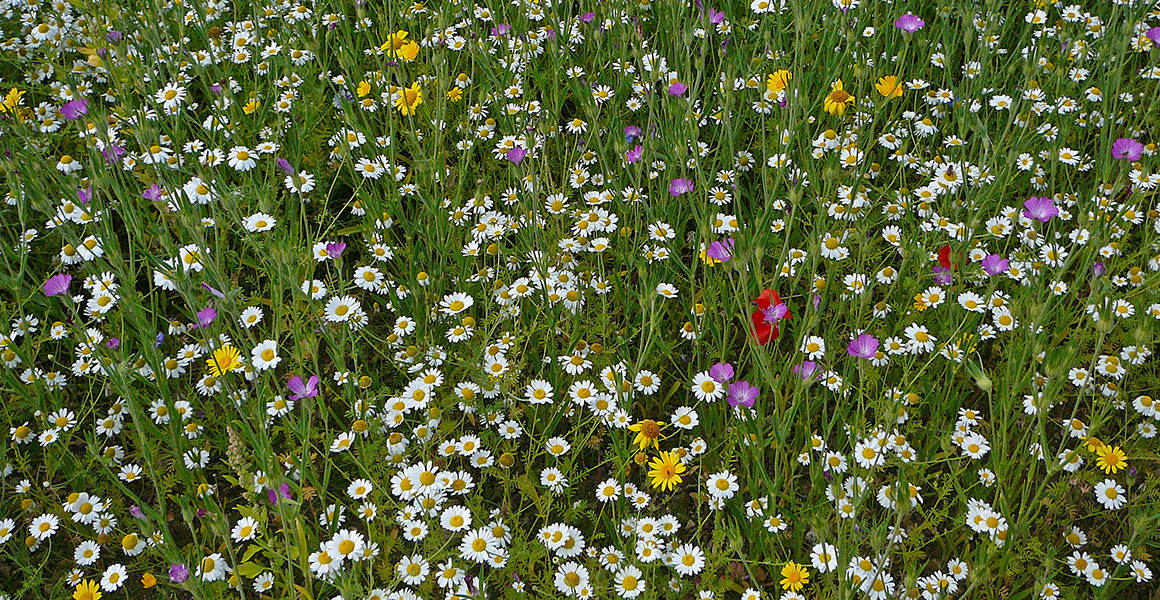


Don't miss a thing
Receive email updates about our news, science, exhibitions, events, products, services and fundraising activities. We may occasionally include third-party content from our corporate partners and other museums. We will not share your personal details with these third parties. You must be over the age of 13. Privacy notice.
Follow us on social media